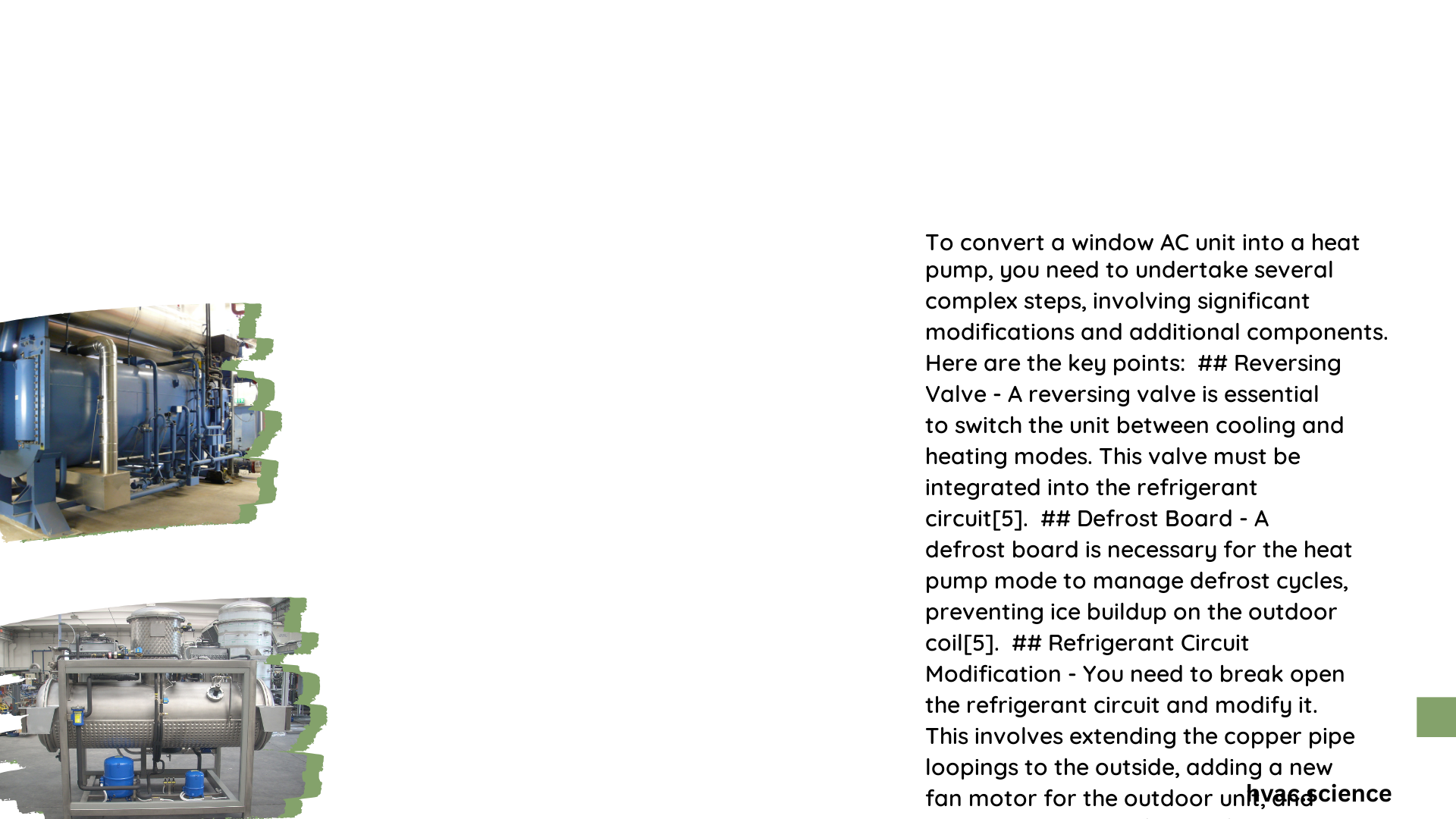Converting a window air conditioning unit into a heat pump is a complex technical process that requires specialized knowledge, precise tools, and careful execution. Homeowners seeking to enhance their existing cooling system’s functionality can transform their window AC into a versatile heating and cooling solution by understanding the intricate steps of refrigerant management, component modification, and electrical reconfiguration.
Why Convert Window AC to Heat Pump?
What Are the Primary Motivations?
- Improve energy efficiency
- Reduce heating and cooling costs
- Enhance home comfort
- Extend equipment lifespan
- Minimize environmental impact
Essential Tools for Conversion

| Tool Category | Specific Tools | Estimated Cost |
|---|---|---|
| Refrigerant Management | Recovery machine, piercing valve adapters | $200-$500 |
| Cutting/Modification | Tube cutter, pipe cutter | $50-$150 |
| Electrical Work | Wire strippers, multimeter | $100-$250 |
| Installation | Drill, brazing equipment | $150-$400 |
Detailed Conversion Process
How to Prepare for Conversion?
- Assess Current Window AC Unit
- Check refrigerant type
- Evaluate unit’s overall condition
- Measure BTU capacity
-
Inspect electrical specifications
-
Refrigerant Recovery
- Use professional recovery machine
- Capture existing refrigerant safely
- Follow EPA guidelines
- Prevent environmental contamination
What Components Need Replacement?
- Reversing valve
- Defrost control board
- Accumulator
- Electrical controls
- Line set connections
Cost Breakdown of Conversion
What Will the Conversion Expense?
- Material Costs: $400-$1,250
- Labor Expenses: $500-$2,000
- Total Investment: $900-$3,250
Performance Expectations
How Much Can You Save?
- Energy efficiency improvement: 30-50%
- Potential annual savings: $200-$500
- Reduced carbon footprint
- Enhanced home comfort
Critical Conversion Considerations
What Are Potential Challenges?
- Complex technical procedure
- Requires advanced HVAC knowledge
- Potential warranty voiding
- Risk of improper installation
- Specialized tools requirement
Safety and Compliance
What Regulations Must You Follow?
- EPA refrigerant handling regulations
- Local building codes
- Electrical safety standards
- Professional certification recommendations
Recommended Professional Involvement
When Should You Hire an Expert?
- Limited technical experience
- Complex electrical modifications
- Lack of specialized tools
- Desire for manufacturer warranty preservation
Maintenance After Conversion
How to Ensure Long-Term Performance?
- Annual professional inspection
- Regular filter replacement
- Monitor refrigerant levels
- Check electrical connections
- Clean coils and components
Alternatives to Conversion
What Are Other Options?
- Purchase new heat pump system
- Install ductless mini-split
- Upgrade to modern window heat pump unit
- Explore central heating alternatives
Final Recommendations
What Should Homeowners Consider?
- Evaluate current system’s condition
- Calculate potential energy savings
- Compare conversion cost versus replacement
- Consult HVAC professional
- Consider long-term energy efficiency goals
Warning: Conversion requires advanced technical skills. Improper modification can lead to system failure, refrigerant leaks, and potential safety hazards.
